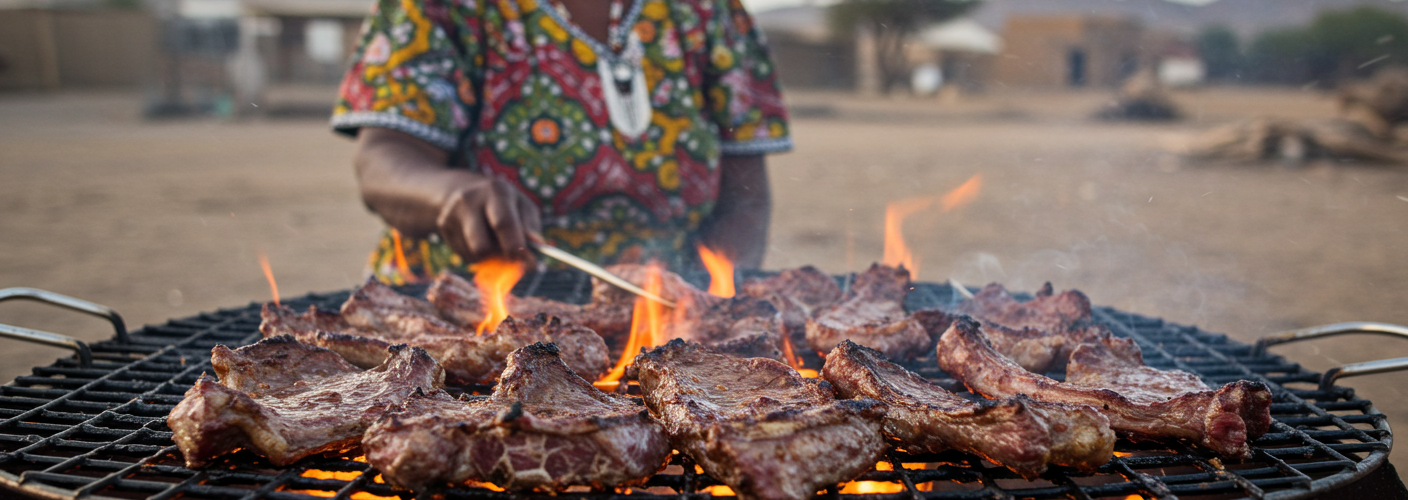In the vast landscapes of Namibia, where the sun sets over endless horizons, a culinary tradition has captured the hearts and appetites of locals and visitors alike: Kapana. This vibrant street food isn’t just a meal; it’s a cultural experience that exemplifies the essence of Namibian cuisine. With its roots embedded in the communal outdoor cooking practices, Kapana symbolizes more than just grilled meat—it embodies the spirit of togetherness, tradition, and flavor.
What is Kapana?
At its core, Kapana is simply meat grilled over an open flame, but its simplicity belies its complexity. Traditionally, beef is the meat of choice, marinated and seasoned to perfection. Vendors often set up shop with portable braai (grill) stations, where you can watch as they expertly cook the meat right before your eyes. The aroma of sizzling meat fills the air, beckoning passersby to indulge in a plate of this succulent fare.
The choice of cuts can vary, often showcasing a selection of beef, but sometimes including goat or game meat for the more adventurous eaters. What sets Kapana apart from other grilled meats is the unique blend of spices and the grilling technique, which focuses on achieving a perfect char while keeping the inside juicy and tender.
The Kapana Experience
One cannot truly appreciate Kapana without immersing themselves in the experience that surrounds it. Typically found at bustling street corners or local markets, Kapana vendors create an inviting atmosphere. Diners gather around, sharing laughter and stories as they await their order. This sense of community is as integral to the Kapana experience as the dish itself.
As the meat cooks, it is often brushed with traditional spices or marinades—these family recipes are closely held secrets and vary from vendor to vendor. A nominal fee usually grants you a generous portion of meat served alongside a spicy salsa made from chilies, tomatoes, and onions, adding an excellent kick that complements the meat.
In many places, Kapana is served with “pap,” a type of maize porridge, or fresh bread, which helps balance the spiciness of the accompaniments. While you can find Kapana prepared in various ways across the country, the emotional pull of enjoying it fresh off the grill, often shared with friends and family, makes it all the more special.
Why Kapana Matters
Kapana’s importance extends beyond mere nourishment. For many Namibians, it evokes nostalgia, reminding them of gatherings with friends and family under the stars, where stories and laughter were shared over an open fire. It reflects the vibrant culture and rich heritage of Namibia, showcasing local ingredients and cooking methods that have been passed down through generations.
In recent years, Kapana has gained popularity not just among locals but also among tourists seeking an authentic taste of Namibian cuisine. This demand has led to an increase in street food tours and culinary experiences that highlight the best Kapana vendors in cities like Windhoek and Swakopmund.
Conclusion
Whether you are a local or a visitor, indulging in Kapana is an essential part of experiencing Namibia. It’s a testament to the country’s rich culture and culinary traditions, offering a delicious taste of grilled perfection while inviting you into a warm and welcoming community. Next time you find yourself in Namibia, seeking out Kapana isn’t just about satisfying your hunger—it’s about embracing the spirit of togetherness that this beloved dish represents.




Add comment